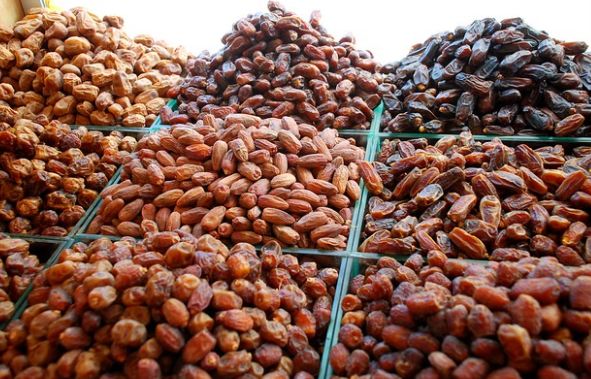
Harga Kurma: Why Dates Cost More in Some Places?
Dates, nature’s candy, come in a dazzling array of textures and flavors. But have you ever stopped to consider why the price of these delectable fruits can vary significantly depending on where they come from? This blog post delves into the world of harga kurma, exploring the fascinating interplay of regional factors that influence date prices around the globe.
Beyond the Sticker Shock: Unveiling the Factors Behind Regional Price Variations
The price you encounter for dates isn’t random. Here’s a glimpse into the regional factors that shape their cost:
Geography and Climate: Date palms thrive in hot, arid climates with specific temperature and humidity ranges. Regions with ideal growing conditions suitable for premium date varieties often have higher production costs, impacting the final price.
Cultivation Methods: The methods employed for date cultivation can influence pricing. Traditional, labor-intensive techniques used for high-quality dates can lead to higher costs compared to large-scale, mechanized farming practices.
Production Costs: Factors like land availability, irrigation requirements, and labor costs can vary significantly across different regions. These production costs ultimately contribute to the final price tag of the dates.
Market Demand: Basic supply and demand principles come into play. Regions with limited date production but high local or international demand might see inflated prices due to scarcity and popularity.
A Deep Dive into Regional Variations: Examples from Around the World
Let’s explore how regional factors influence the cost of some popular date varieties:
Medjool Dates: Prized for their large size and soft texture, Medjool dates often command a premium price. Regions renowned for their high-quality Medjool cultivation, like California in the US or Morocco in North Africa, might have slightly higher prices compared to other date varieties grown in the same region.
Deglet Noor Dates: These smaller, drier dates are known for their honeyed sweetness. Countries like Tunisia, a major Deglet Noor producer, might offer competitive prices due to established cultivation practices and higher production volumes.
Specialty Dates: Rare or specialty date varieties, like Ajwa dates from Saudi Arabia, might have a higher price tag due to limited geographic availability, specific cultivation methods, and their perceived prestige.
Beyond the Region: Additional Factors Affecting Price
While regionality plays a significant role, other factors can influence date prices:
Import Costs: For regions that rely on date imports, additional costs like transportation fees, import duties, and taxes can be factored into the final price for consumers.
Processing and Packaging: The level of processing and packaging involved in preparing dates for market can also contribute to price variations. Premium packaging or pre-cut and pitted dates might come at a slightly higher cost.
A Sweet Conclusion: Making Informed Date Purchases
Understanding the interplay of regional factors and other considerations empowers you to make informed decisions when purchasing dates. Consider your budget, desired variety, and quality preferences. Explore options from different regions and compare prices to find the best value for your money. Don’t hesitate to ask questions from reputable date vendors or online retailers about the origin and pricing of the dates they offer.
Key Highlights:
- Geography, climate, cultivation methods, production costs, and market demand influence regional date prices.
- Examples like Medjool, Deglet Noor, and specialty dates showcase regional variations in cost.
- Import costs, processing, and packaging can also be factors affecting date prices.
- Understanding these factors empowers informed date purchases and finding the best value for your budget.